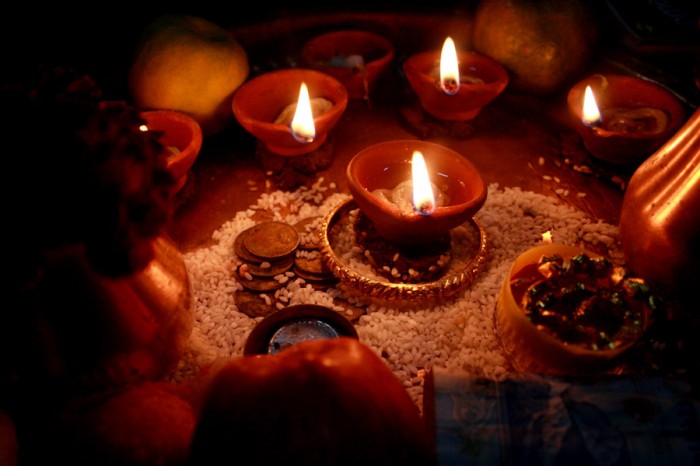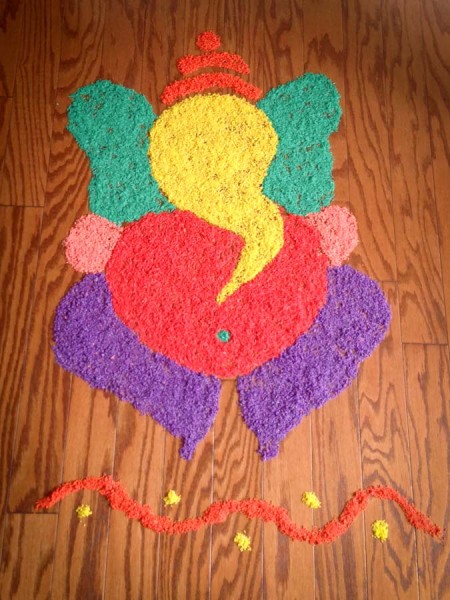
I have a frenetic week planned: I’m heading to Pike Place Market to buy flowers and fresh ingredients for the four-course meal I’m cooking today, then heading to Redmond to pick up clay lamps and Indian decorations. I’ll also be making a pit stop at the world’s first Nordstrom downtown to buy gold.
I assure you, this is not normal for me. But for this one week every year, I bring a taste of my Indian roots to Seattle, my adopted home. It’s Diwali today, the Hindu festival of lights. I’m among the very few in my circle of friends here who will be celebrating.
But not so long ago, this annual week of celebration was a natural part of my personal and professional life. Growing up in Singapore, where Diwali is observed as a national holiday, celebrations are loud and colorful. My parents’ friends would be discussing the places for the best Diwali shopping and which holiday parties were must-attends (and which to skip), months in advance. From dozens of bright lights at my house entrance, to 21 clay diyas distributed in each room around my house, the festive season was visible everywhere. I would be wished “Happy Diwali” by Indian and non-Indian friends alike. I even regularly attended work holiday parties for Diwali.
As a result, I often took the holiday for granted when I lived in Singapore. Sure, I’d eagerly anticipate my mother’s spiced aloo curry with deep-fried pooris, dahi-vadas and halwa for Diwali dinner. I would love huddling for hours with my family to adorn our floors with intricate Rangoli patterns around the house to symbolically welcome Laxmi, the Goddess of Wealth. I would even look forward to the frenzy around Serangoon Road, where Singaporean Indians go to stock up on other festival shopping. But because Diwali was so ubiquitously celebrated — with great gusto across the homes of our friends and family — I never fully appreciated its significance in my life.
That changed dramatically when I moved to the U.S. three years ago. Suddenly, the day that was once so important for me, became just like any other when I moved here. Many of my new friends hadn’t even heard of Diwali. While Diaspora Indians were well-represented in the American cities I’ve lived in: New York, Atlanta and now, Seattle, most of the festivities took place in the suburbs.

I quickly learned two things: it would be up to me how much — or how little — of the tradition I upheld. But more surprisingly, I realized it really, really mattered to me that my Diwali in Seattle should be as magical as it was back home. And that I would do anything to try and make it that way.
Preserving my tradition even when all the ingredients aren’t easily available has been an adjustment. No doubt, it’s been hard to balance my work schedule, while agonizing over which morning I could wake up early enough to decorate my apartment. It has meant lining up all customary, celebratory, and religious rituals extensively on the weekends ahead of time, so I can head to work like it’s a regular day. It has meant explaining to non-South Asian colleagues and friends that I’m celebrating the “Hindu version of Christmas.” I’ve also had to get used to driving 23.5 miles to get to the Hindu temple. That’s different from the times I could choose from 15 temples within a five-mile radius of my home in Singapore.
To recreate my own version of Diwali, this year I will be adorning my Seattle apartment with simpler Rangoli patterns than the ones I created with my artistic mom and sister in Singapore. My potato curry will never taste like my mother’s, and I’m too scared to attempt cooking dahi-vadas, but there will be Indian home cooking to mark the festival — thank you, Google recipes! I now realize how essential the celebration of Diwali has been to shaping my Singaporean-Indian identity.
At the end of the day, the festival is about celebrating the triumph of overcoming challenges. I may not have overcome a mythical 14-year battle — Hindu mythology suggests this as the reason for celebrating Diwali — but I’ve indulged in much creative maneuvering to celebrate it as authentically and enthusiastically as I did back home.
At its core, celebrating light, love and joy, can be done from anywhere.
Happy Diwali!
This post was originally published in The Aerogram.

